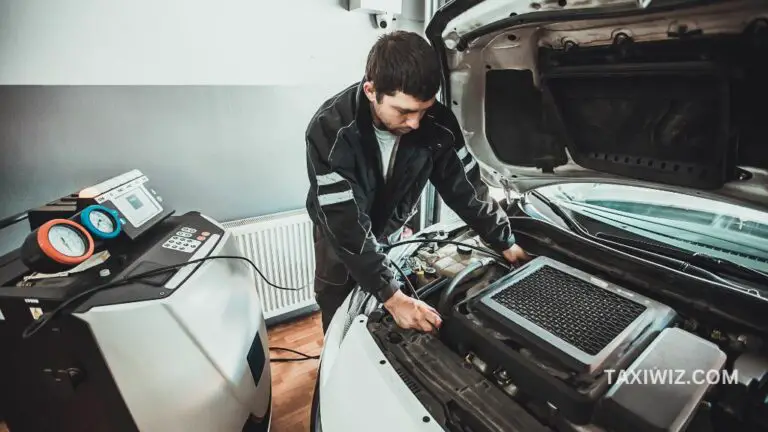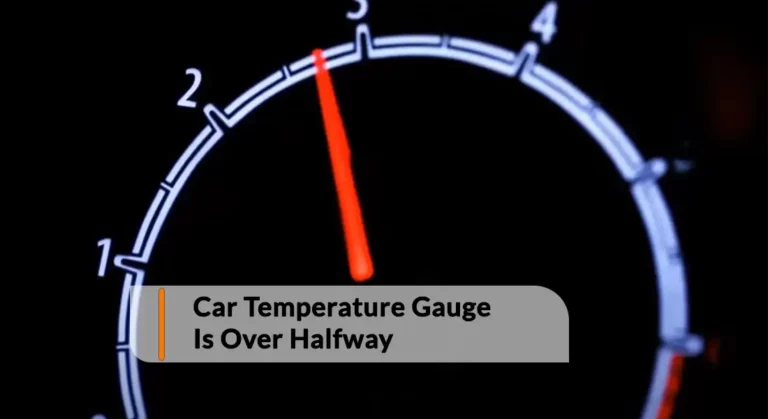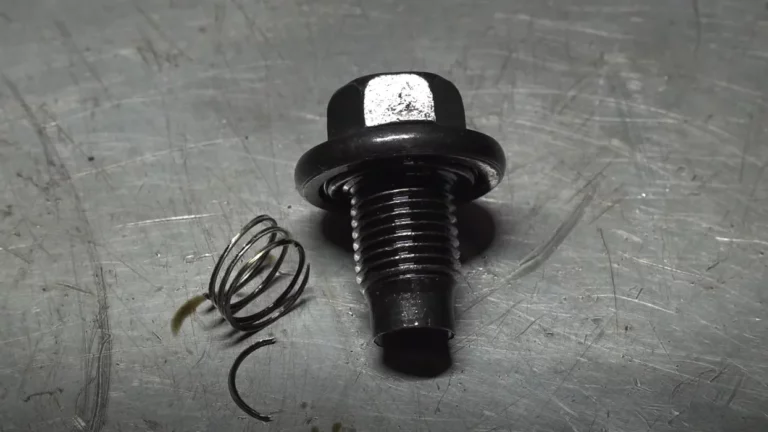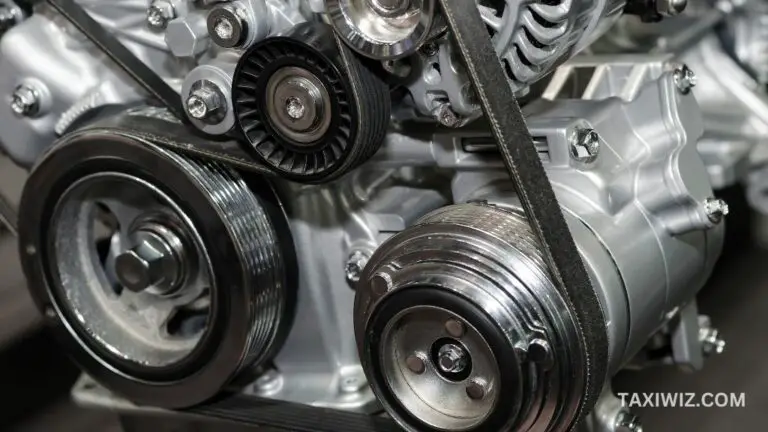Why Do We Run Engine To Check Transmission Fluid?
Different fluids act as a booster for the system to work inside our car. And to ensure they function properly, we check them whenever it’s needed. While most have a similar process of inspection, transmission fluid has a different one.
Usually, we keep the engine turned off for review. But with ATF, the engine needs to run. And this may pop up a very specific question- Why Check Transmission Fluid When Engine Is Running?
It’s because checking transmission fluid with the engine running helps us know its exact condition and amount on dipstick.
We must make sure the ATF warms and circulates well inside the system so that the stick does its job properly. And it’s possible only we start our car. But that doesn’t mean the engine will run for too long. Because any incorrect step can lead to false reading.
Reasons To Check Transmission Fluid With The Engine On
When engine runs, the transmission fluid warms up and circulates which helps provide accurate readings of its quality and level.
Warming The Transmission Fluid
The very first question we ask is whether checking transmission fluid hot or cold.
Firstly, the fluid has to be under normal operating temperature i.e. around 175°F to get the right results. For this, I suggest you run the car for around 5 to 20 minutes. The time varies depending mostly on transmission type and fluid viscosity. As it reaches the right temp, check the fluid with the engine running and gear set at “Park”.
If we don’t turn on the engine, the ATF will remain cold and just sit at the bottom of the pan. Consequently, we get false low readings and end up with overfilled fluid.
Contrariwise, if the engine runs for too long, the transmission fluid will get extremely hot. Not only will it expand and go above the recommended level but also affect the quality. And because of the over-expansion, it’ll make the fluid quantity appear more than there actually is.
Distributing The Transmission Fluid
The torque converter has to be filled with transmission fluid to let it circulate throughout the system and get the correct info. And it works when engine runs for some minutes. This makes the pump push the ATF into the converter. When it’s full, it transfers the engine power to the transmission gears.
Here, contaminants present in ATF also move along with it. While such circulation happens, the dipstick measures the fluid level and inspects its quality to get us the exact reading.
However, the converter should hold the right amount of fluid. In case it isn’t filled properly, the dipstick may show a low level despite having enough fluid in the pan. Plus, insufficient amounts can also make the pump take in air with the ATF which can affect the transmission.
Then again, if it gets overfilled, the dipstick will show higher level than the actual amount. Not just that, it can cause the fluid to foam which can lead to failure of transmission.
In both the cases, air bubbles can cause ATF overheating, oxidation, and sludge/varnish buildup. And consequently, all these work to affect the operation of the valve and clutch.
What’s The Proper Way To Check Auto Transmission Fluid?
Run the engine for some minutes with the gear in park, pull out dipstick to clean it, insert it, and pull it out again to check transmission fluid. However, I suggest you check the owner’s manual or ask experts since procedure varies based on the models.
Warm Up Transmission Fluid
Run the engine for around 5 to 20 minutes to help the fluid reach its normal operating temp. See the manual to check the correct timing range or ask experts. Also, make sure the transmission is set in “Park”.
Find Where Dipstick Is
Look for transmission dipstick location. It should be near the back of the engine and have ATF or Transmission written on the body. I found most of them have a bright-colored handle, either red or yellow. Check the manual to know the right one.
Clean Dipstick And Keep it back
Pull it out of the tube. Clean it well with a paper towel or lint-free rag. Put it back properly.
Pull Out Dipstick And Check Fluid Level
Pull it out again and check the ATF level by looking at both indicators of the dipstick. One with a “full” and other with a “low” mark.
Inspect ATF Quality
In case it’s full or between the marks, then check the quality of the transmission fluid. Fresh ones should appear clear red and have a sweet or tart smell. If it turns dark brown, cloudy, and/or smells burnt, then change or flush it.
Add Fresh Fluid If Low/Bad
If it’s low or went bad, then take it to an auto center to add fresh fluid. I suggest you let a tech do it in case you’re amateur. If not, then it’s pretty simple to DIY.
How to Fill Auto Transmission Fluid?
- Turn on or off the engine and leave it in park or neutral. Check the manual to see what to do.
- Use a funnel to fill the reservoir or pan with the “appropriate” fluid through dipstick.
- Pour small amounts at a time and check the level on the stick after each addition. Don’t overfill since it can cause the system severe damage.
- After topping it off, take out the funnel and insert the dipstick properly.
How To Check Transmission Fluid Without A Dipstick?
To check transmission fluid without dipstick, some have caps while some have level plugs that need to be removed and then require the use of funnel. Hence, the procedure varies based on models.
Step 1
In both cases, you need to warm the engine, precisely fluid for 5 to 20 minutes and park the vehicle on level ground. This ensures accuracy of ATF level.
Step 2
Then, locate the cap or level plug and take it out.
Step 3
Now check the fluid level. I won’t suggest using your finger since it can cause an allergic reaction or damage to it. Instead, use a long, thin funnel to inspect the ATF quantity.
Step 4
The fluid should be at the bottom of the port or hole. If it’s low, pour small amounts of ATF at a time until it starts trickling out of the port.
Step 5
Lastly, secure the cap or level plug. Replace if damaged.
Frequently Asked Questions (FAQs)
Do You Check Transmission Fluid In Park Or Neutral?
Most vehicles require the engine to be running with the gear set at “Park” or “Neutral” and on level ground to check transmission fluid.
However, for some older models, you may need to run the engine for 3 minutes, turn it off, set the gears at “Park” or “Neutral”, and then check the ATF. For instance, 2001-2005 Honda Civic. So, it all depends on which model you own.
Hence, I recommend you go through the owner’s manual to follow the right procedure.
What Happens If I Don’t Check My Transmission Fluid?
Not checking transmission fluid can cause several problems in the transmission system that may lead to failure. Let me highlight some of them.
Transmission Failure: The ATF quantity will eventually hit the low-level mark. And if you continue to drive the car with insufficient fluid, the system will overheat and fail.
Improper Gears Shifting: Low fluid level will also make the gears grind or slip when you try to change them. This can lead to accidents.
Decreased Fuel Economy: Not checking ATF will affect the transmission. And once the mechanism starts functioning poorly, it may use more fuel to work.
What Are The Signs Of Low Transmission Fluid?
Some common signs of low transmission fluid include a burnt smell, clunking/grinding noises during gear shifts, ATF leaks, slipping gears, reduced acceleration, and illuminated check engine lights.
Final Words
It’s a must to check ATF the right way. With this, we can know about its quantity, quality, and other possible issues like leaks properly. Although the default process involves running the engine and inspecting transmission fluid, some models work differently. So, I’ll say it again, and that is to read the vehicle manual before doing anything.
However, it’s a must to follow the maintenance rules. I always prefer checking transmission fluid once every month and recommend the same. You should consider getting a fresh batch every 30,000 to 100,000 miles depending on the models. This way, the system will work fine and let you enjoy driving.






